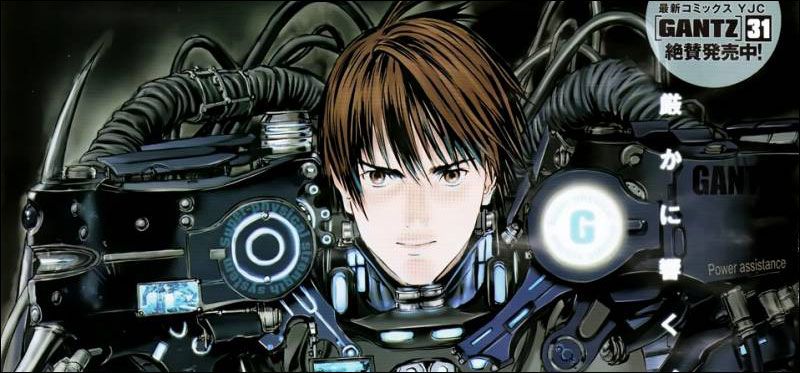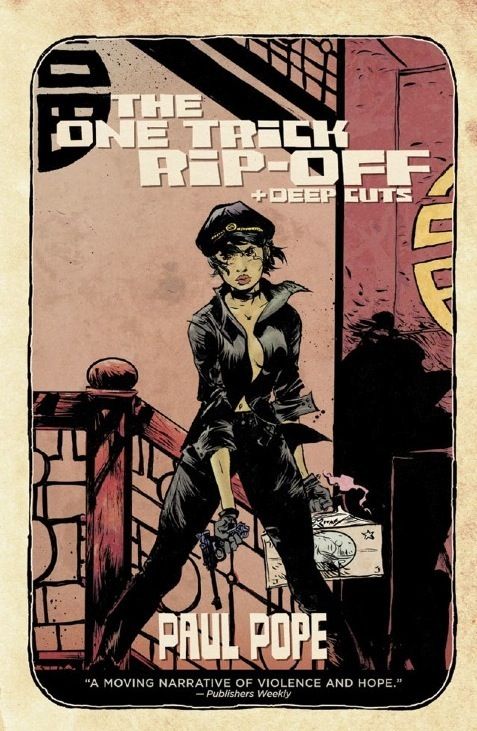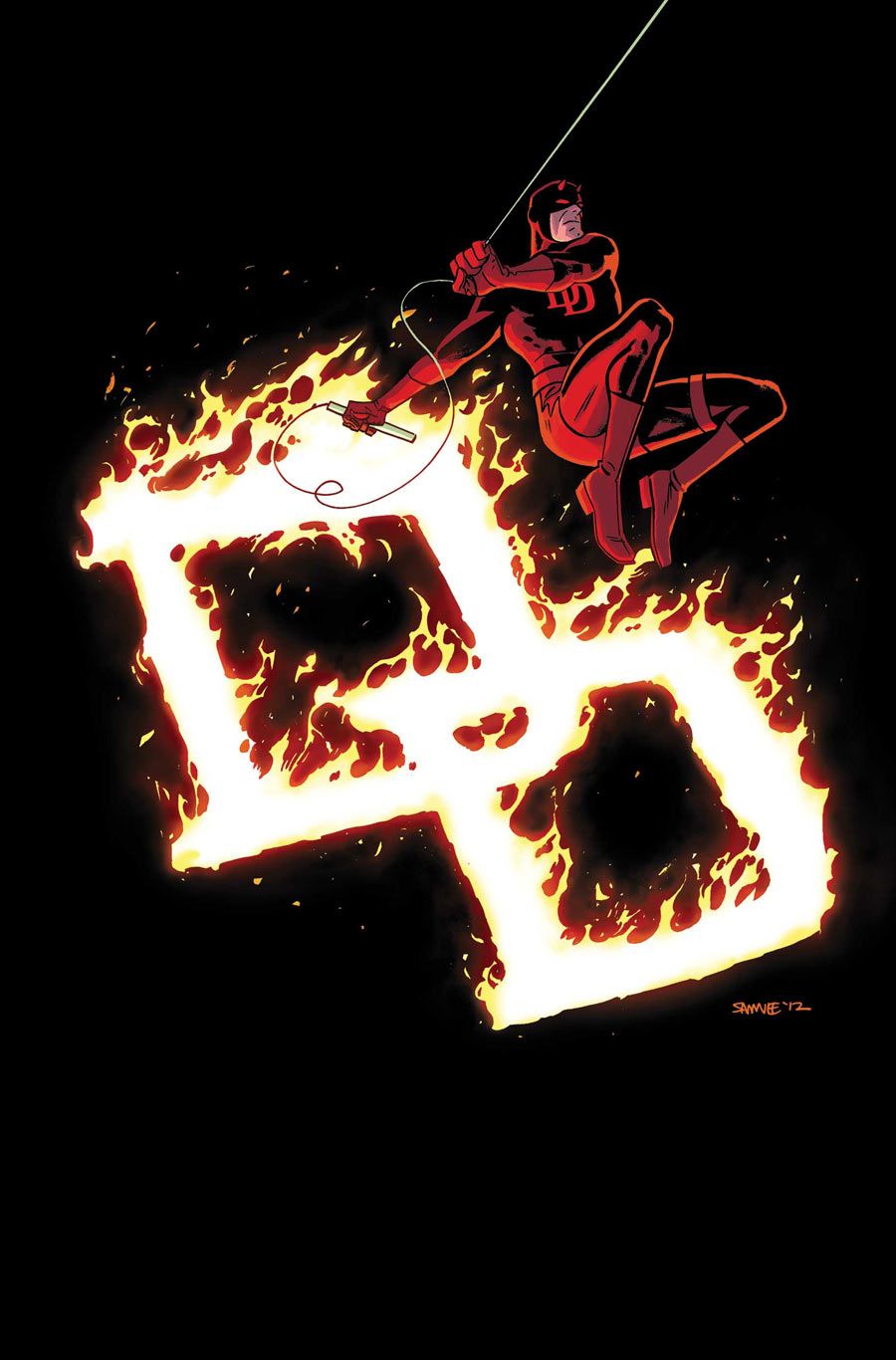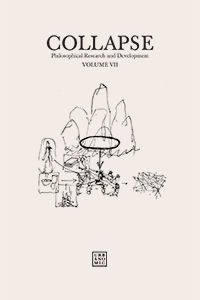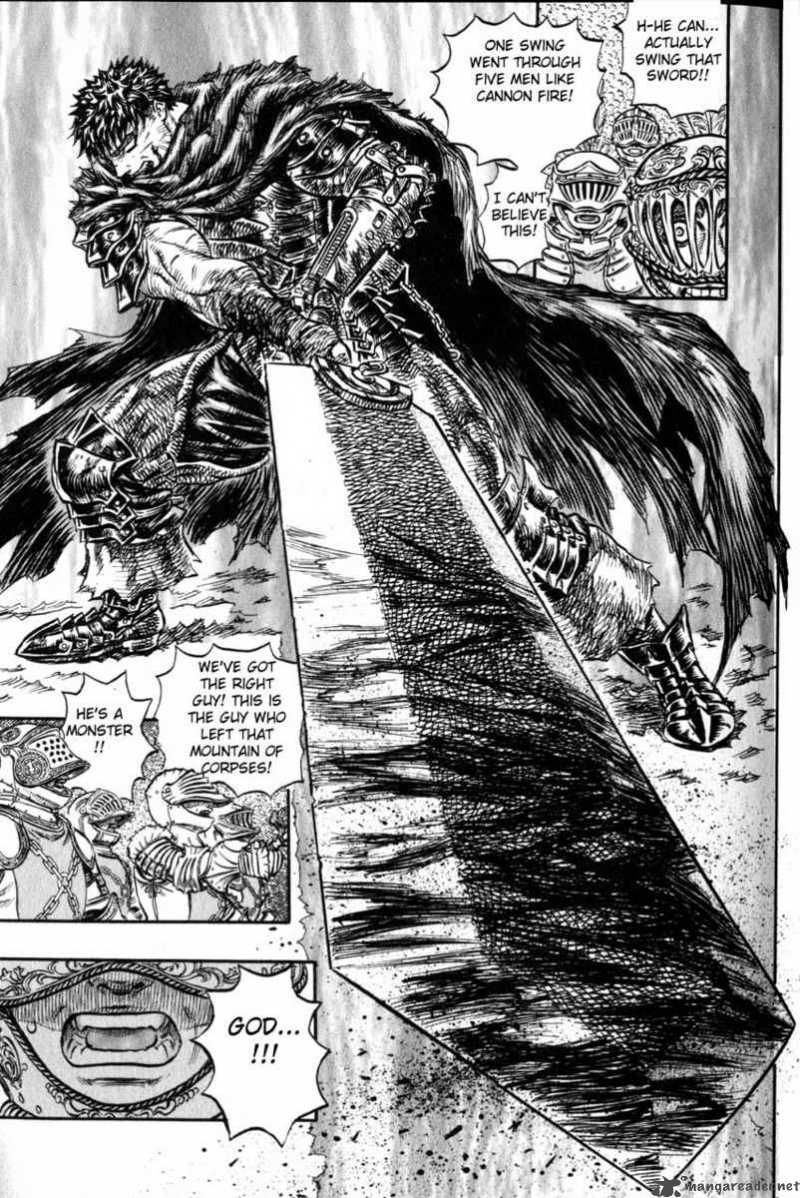Hello and welcome to What Are You Reading?, our weekly look at the books, comics and what have you that the Robot 6 crew have been perusing of late. Today we welcome our special guest Steven Sanders, artist of such comics as Wolverine and the X-Men, Wolverine, S.W.O.R.D, Our Love is Real, The Five Fists of Science and more. He's currently using Kickstarter to raise funds for a "Creative Commons art book" called Symbiosis.
"Symbiosis is a world-building art book that tells the story of a woman's travels through a world where the symbiotic relationship that we have with technology is made much more visceral," the Kickstarter page reads. "All sources of power are generated by bio-etheric engines, with which the operators share a direct mental link. The story-telling is loose and mostly visual. It will be told with art that uses a variety of media and formats: fully painted, colored line art, black-and-white line art, and comic art. What you do with this story is up to you. Enjoy it on its own merits, or take it and spin it off into any of a million different directions."
To see what Steven and the Robot 6 crew have been reading, click below:
*****
Mark Kardwell
This week I picked up a copy of Paul Pope's The One Trick Rip-Off + Deep Cuts, a book I was initially reluctant to buy, because I thought I already owned a fair ol' chunk of it boxed up in an attic somewhere. I'm glad I did buy it, though, as it turned out there's a lot of stuff in there that I haven't seen before. This isn't the book I'd recommend to absolute Paul Pope beginners (that'd still be Heavy Liquid, then quickly onto 100%, then Batman Year 100), but it is the book to demonstrate how good he got, and how quickly. There's work in here from 1993 that's just about alright, but by 1997 he's on the verge of greatness. By 1999 he's pretty much at full power.
Tom Bondurant
Folks, I gotta tell ya, it feels like I read all the comics this week. (All of them, Katie!) I read twenty-one big-publisher floppies, including Action Comics, JLA, Vibe, Green Lantern, GL Corps, Avengers, Superior Spider-Man, Indestructible Hulk, Thor, Justice League, Supergirl, Catwoman, Wonder Woman, Batwoman, Star Trek, Star Trek: Countdown To Darkness, and the five I ended up saving for Saturday evening.
DC Universe Presents #17 (written by Joe Keatinge, drawn by Ricken) is an Arsenal spotlight. I haven't read Red Hood and the Outlaws since the first issue failed to grab me, so I don't know how representative this issue might be. For the first few pages it tries very hard to establish its badass bona fides, showing Arsenal as self-deprecating but capable, defiant as the bad guys beat on him, etc. Competing narrative streams (dialogue and internal monologue) also make it hard to get into the book. For a while, though, things settle down, and it's not a bad issue. (That is, for a superhero-style comic marinated in attitude and violence, with a garnish of Starfire's barely-contained dinners.) Then it gets into Arsenal's ability to spit currency, and it never really recovers. Keatinge's dialogue had a certain charm, and Ricken's art is pretty decent (sketchy, but detailed, with a fine line). Pete Pantazis' bright, pastel-heavy colors are a nice complement too. Again, though, it didn't make the sale.
It's too bad that Sword Of Sorcery has been cancelled, because the Amethyst story in issue #5 (written by Christy Marx, drawn by Aaron Lopresti) was pretty good. It reveals how Amethyst's dad died, and the political ramifications thereof, but it also ties fairly strongly into the larger DC Universe. (For one thing, it takes place just after the Justice League Dark Annual.) World-building is necessarily part of Amy learning the ropes of Gemworld, and here Marx uses backstory effectively to highlight the emotional consequences for Amy and her mom. Plus, Lopresti really puts a lot into his work here, giving the story a lot of visual appeal.
Speaking of emotional consequences, much of Daredevil #23 (written by Mark Waid, drawn by Chris Samnee) involves Matt and Foggy coming to grips with Foggy's health issues, while Daredevil fights a gang of eerily familiar guinea pigs. The latter give the issue some very creepy moments, both for what was done to these men and for the kind of person who'd do such a thing. Another solid issue all around.
Same goes for Saga #10 (written by Brian K. Vaughan, drawn by Fiona Staples), which is full-to-bursting with great character moments and inventive situations. My favorite was the giant flaiming gorilla flipping the bird, but there's probably at least a three-way tie for second place.
Finally, in Adventure Time #13's lead story (written by Ryan North, drawn by Shelli Paroline and Braden Lamb), Finn, Jake, and Marceline take to cyberspace to rescue BMO from an evil virus. Along the way, though, the story takes a detour into Star Trek territory (either "The Changeling" or The Motion Picture will do), which naturally I found hilarious. It also gives Marceline a chance to explain why she knows so much about computers, when Ooo has become so magic-based. I hadn't really wondered about that a whole lot, but it was nice to see.
And with that, my Wednesday haul is complete. Whew!
Brigid Alverson
I'm late to the party with this one, but I'm reading My Friend Dahmer for a roundtable, and I'm very impressed with Derf Backderf's storytelling, the cinematic way he has of letting a scene unfold from a particular character's point of view. I'm less enthused about the blocky style he uses to draw his characters, which makes them seem very static and also brings back memories of MAD Magazine, which I guess is appropriate in a graphic novel about teenage boys. Anyway, it's a fascinating read and a good reminder to be grateful that I'm not in high school any more.
I picked up an advance copy of Popeye Classics, vol. 1, on Netgalley. This is an archive collecting the first four issues of the Popeye comics Bud Sagendorf did for Dell, and they date back to 1948. Pappy and Sweet Pea show up in some of the stories, and Popeye is a big spinach fan by now. The digital galley doesn't include any frontmatter, but I hope the print book does; it would be helpful to place these stories in context, as I'm not a Popeye scholar by any means. However, they are pretty entertaining to read just as comics.
Finally, it's not a quick read by any means, but I am really enjoying the first volume of American Comic Book Chronicles: The 1960s, by John Wells. It's a close-up look at the comics industry, with a lot of emphasis on editors and creators, and you can see the characters and themes evolving—it's sort of like a written version of time-lapse photography. It's well written and lavishly illustrated, so it's a lot of fun to read.
Steve Sanders
Collapse Vol VII: Culinary Materialism Edited by Reza Negarestani - The "Collapse" series are a favorite of mine. They call the journal "Philosophical Research and Development." It's currently being edited by the writer/philosopher who wrote "Cyclonopedia," which is another excellent book worth looking at. (Black anti-sun of oil beneath the earth manipulating mankind! Dense philosophy! Skull thrones!) These books run in lots on 1000 only, and the tend to go for a couple hundred on-line as soon as they are sold out. Which isn't why I buy them, but it gives me something to feel smug about for no good reason. This particular volume deals with combining philosophy and the culinary into a unified whole, vs just talking about the philosophy of the culinary. For instance, there's an article that views war as eating/food production, and follows how we make war progressing along with how our society forms, and what happens when older forms of combat/eating collide with more modern ones. Like how in Vietnam, the older "hunter-gatherer" style of guerrilla warfare completely subverted the more conventional style America was using. It completely changed the topography of warfare. Same with terrorism. It's really a fascinating book.
Paradigms & Fairy Tales by Julienne Ford - I chanced across this at a used book store. It addresses epistemology through the eyes of the social sciences, and does it in a very casual manner. A lot of the philosophy is outdated, (it presses for "common sense" regarding phenomenology, which holds to a point.. ) but it's a fun primer in studying how we construct meaning in society.
Berserk by Kentaro Miura - This manga has ran as one continual story since the early '90s, and is pretty amazing. It started out as sort of Clive Barker and H.R. Giger's European fantasy love-child, and has progressed to be a more traditional fantasy work,but it is still incredible. The artwork is detailed without being distracting. This is something that is hard to pull off. The eye treats excessive detail in the same way it does open space. It just glazes over it. So if your entire image is drawing every single line and hair on everything, you just get a big mess. Miura and his studio avoid that trap. Their design sense is well honed, as well. Really top notch conceptual design.
Astounding Stories of Super-Science - Archive.org has a lot of copies of these old pulps available and they are pretty fantastic. As per the medium, they are rarely "great" stories, but they have a certain air to them that is very evocative of a certain time and place in America's history, and the science-fiction of the '30s has always captivated me with its machine age view of the world. It was frequently a much more optimistic view of the world. I also like the near-magical view they had of "rays" back then. Since X-rays were still a fairly recent discovery, there was an anticipation of the discovery of all kinds of other rays with properties that would astound humanity. That obviously didn't happen, but the thought of such things still holds a lot of appeal for me.
Gantz by Hiroya Oku - I'm not really quite sure what to even say about this manga. It's hyper-violent, epic, disturbing on a variety of levels, well executed in a number of ways but also kind of lazy and sloppy in others. They use a lot of direct 3D renders in the art, in a way that is not seamless at all, and there will be super obvious rip-offs (which I cannot talk about without spoilers), and story arcs that start, go for a while, and then are suddenly dropped and are apparently never to be addressed again. Nevertheless, I find it compelling and continue to read it as soon as I can get my hands on new issues.

